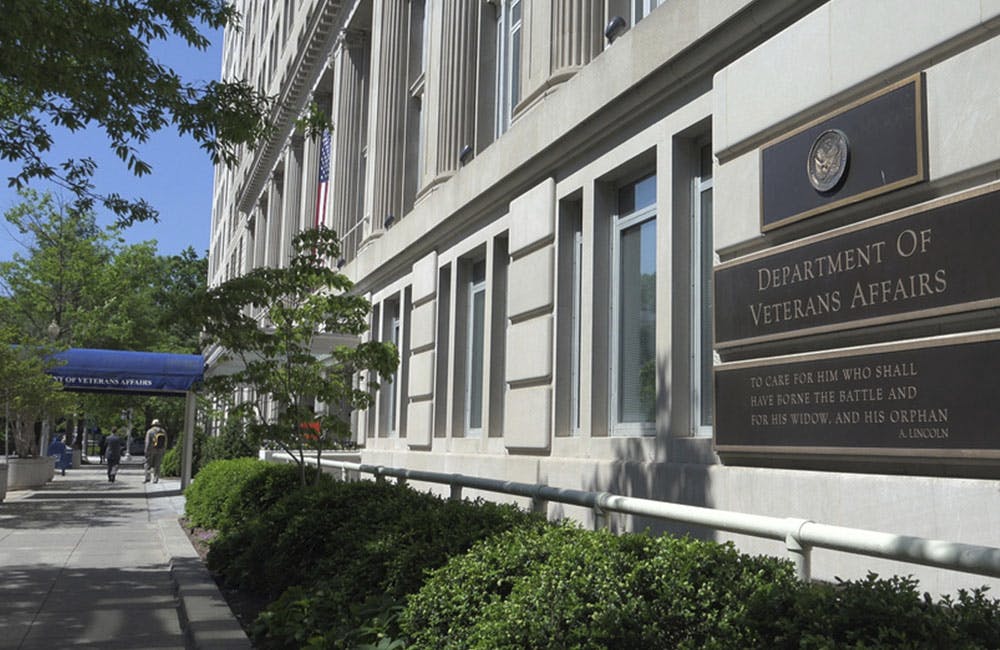How AI Policy Could Shake Out in a New Presidency
Both Harris and Trump have stances on AI and technology policies that consider public benefit and national security.

Federal agencies working to advance artificial intelligence development a year after President Joe Biden’s AI executive order face an administration change that could shift how AI policy would look like under a new president.
AI Under Harris
Vice President Kamala Harris’ current stance around AI policy strategy would likely mirror what we’ve seen over the past year under Biden. But a look at her personal track record could give some insight into how implementing the executive order could look like under her administration should she win.
“As president, Silicon Valley will not be a distant curiosity to [Harris], but rather a culture and policy space with which she is quite familiar from personal experience and from her prior work in elected office,” Former White House Office of Science and Technology Policy Acting Director Alondra Nelson told GovCIO Media & Research. “This personal and professional background has brought with it clarity about the perils and possibilities of technology in general, including AI.”
Nelson cited a November 2023 speech at the U.S. Embassy in London where Harris voiced the current administration’s approach to AI policy.
“Namely that we can have guardrails to mitigate risks and harms artificial intelligence, including consumer fraud, negative impacts on workers, and discrimination in housing, health care and hiring — while securing economic and national security and unequivocally supporting responsible innovation,” said Nelson. “She stated a vision for AI that is used to advance human rights and human dignity, where privacy is protected, and people have equal access to opportunity.”
During that briefing, Harris talked about the numerous benefits of AI for its potential in developing new medicines, treating and curing disease, improving agricultural production and saving lives in the fight against the climate crisis. However, Harris also recognized AI’s potential to cause major harm such as AI-enabled cyberattacks.
“Our administration will establish a national safety reporting program on the unsafe use of AI in hospitals and medical facilities. Tech companies will create new tools to help consumers discern if audio and visual content is AI-generated,” said Harris in that speech. “AI developers will be required to submit the results of AI safety testing to the United States government for review.”
Harris’ campaign cited making permanent the National Artificial Intelligence Research Resource, noted Nelson. “They also promise to combat the AI-enabled price fixing that makes it difficult for home-seekers to find affordable housing, even as they count AI among the industries of the future that will be important to the opportunity economy.”
Harris also highlighted the U.S. AI Safety Institute the current administration established to create rigorous standards to test the safety of AI models for public use.
“We are also taking steps to establish requirements that when the U.S. government uses AI, it advances the public interest,” Harris said. “We intend that these domestic AI policies will serve as a model for global policy, understanding that AI developed in one nation can impact the lives and livelihoods of billions of people around the world.”
In July, Harris announced over $500 million in funding for 12 Regional Technology and Innovation Hubs designed to boost the nation’s economy. The hubs will help create innovative opportunities for the American workforce to lead in AI and quantum computing.
AI Under Trump
AI was not as major of a focus in former President Donald Trump’s first term, but his administration did take some of the first steps in government to address the emerging technology.
Trump in February 2019 signed the nation’s first AI executive order that launched the nation’s “American AI” initiative that focused on finding ways to promote and remove developmental barriers for AI and prioritized federal agencies’ investments in the tech.
The executive order instructed agencies to work with the Office of Management and Budget to develop principles on how it would integrate AI through guidance of regulatory and non-regulatory approaches. In January 2020, OMB released guidance that recommended avoiding regulation that could stymie AI research and development.
Trump in recent months has alluded to removing policies from his predecessor and opting instead for a “light touch” approach to regulating AI, said R Street Institute Resident Senior Fellow of Technology and Innovation Adam Thierer.
The Republican platform has stated its desire to repeal Biden’s AI executive order. However, Thierer told GovCIO Media & Research that it is unlikely Trump would do away with the provisions completely.
“You could imagine [the Trump administration] narrowing the scope of some of the things that were authorized, but I have a very hard time believing that they could really, truly eliminate it whole cloth,” Thierer said. “A lot of it I think the Trump administration will just essentially rubber-stamp or re-approve, such as agencies being encouraged to better tap AI for their own purposes, or thinking about how it could have various benefits, or identifying at least how AI is currently being used in various government functions.”
According to Thierer, there might be disagreement as to how to regulate AI amid Republicans. He pointed to a “Jekyll and Hyde” tension over when and where to regulate the tech, from the creation of AI safety institutes to national security concerns over open-source AI. This tension could result in Trump deferring regulation mainly to Congress, he said.
“The Trump team would throw a lot of this responsibility back to Congress and say, ‘Well, if you really want this stuff, you’re going to have to go ahead and authorize it because we’re going to basically take away their authority to do this,’” Thierer said.
Neither Trump’s running mate JD Vance and Harris’ running mate Tim Walz has an extensive background in technology or technology policy. They have, though, expressed agreement around broadband support, especially for underconnected and underserved areas.
“In AI specifically, this is something that I think the next administration, whoever it is, will have to look at more closely,” Daniel Castro, vice president at the IT and Innovation Foundation (ITIF), told GovCIO Media & Research.
Stay Tuned
Regardless of who wins, AI and federal government’s role over its development aren’t going anywhere. This is especially critical as a matter of national security.
“If we don’t deploy AI more quickly and more comprehensively to strengthen our national security, we risk squandering our hard-earned lead,” said National Security Advisor Jake Sullivan this month about the White House’s newest AI memo specifically for the Intelligence Community.
With all the recent policies at play and in development, there’s still the matter of full-scale adoption.
“Being first to regulate doesn’t necessarily mean you’re going to be first in adoption. We have a number of companies who are delaying deployment of AI in Europe because of their recent rules,” said Castro.
This is a carousel with manually rotating slides. Use Next and Previous buttons to navigate or jump to a slide with the slide dots
-

White House Science Chief: US-Driven AI Sets Global Standards
Michael Kratsios outlined how American AI technology on the global stage will help standardize the tech and counter China’s influence.
5m read -

Modernizing Critical Infrastructure in the Face of Global Threats
Officials are expanding the latest strategies in boosting defense infrastructure, including securing satellite communications, upgrading enterprise-wide technology, optimizing data management.
20m watch -

Trump AI Orders Call for Speed in Building Infrastructure
The directives call for expanding AI infrastructure, streamlining federal permitting and promoting AI exports.
4m read -

DOD Accelerates Software Modernization with Agile DevSecOps Push
The Pentagon's software implementation plan tackles cultural hurdles and integrates security early to deliver critical capabilities faster.
6m read -

White House Unveils AI Action Plan to Secure Global Dominance
The strategy outlines steps to accelerate private sector innovation, build critical infrastructure and advance U.S. leadership in AI policy and security.
3m read -

VA's Platform One Powers Rapid Innovation to Bolster Digital Services
VA's Platform One accelerates software development timelines from weeks to hours, ultimately enhancing digital services for veterans.
5m read -

Opinion: Original Intelligence Is the Missing Piece for AI Transformation
Limitations of AI agents and development drive growing needs for workforce development and "original intelligence."
3m read -

Pentagon's $200M AI Contracts Signal Broader Effort to Transform Talent
The Army is leveraging Silicon Valley, reservist programs and new hiring strategies to integrate critical digital skills in its ranks.
5m read -

AI Foundations Driving Government Efficiency
Federal agencies are modernizing systems, managing risk and building trust to scale responsible AI and drive government efficiency.
43m watch -

Agencies Tackle Infrastructure Challenges to Drive AI Adoption
Federal agencies are rethinking data strategies and IT modernization to drive mission impact and operational efficiency as new presidential directives guide next steps.
5m read Partner Content -

Generative AI Demands Federal Workforce Readiness, Officials Say
NASA and DOI outline new generative AI use cases and stress that successful AI adoption depends on strong change management.
6m read -

The Next AI Wave Requires Stronger Cyber Defenses, Data Management
IT officials warn of new vulnerabilities posed by AI as agencies continue to leverage the tech to boost operational efficiency.
5m read


















